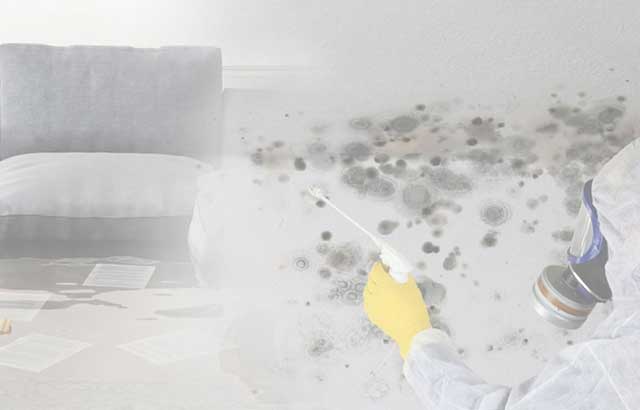Here below you can locate lots of great resources with regards to How to Repair and Prevent Bathroom Water Damage.

The restroom is very vulnerable for moist build-up as well as possible water damage due to the regular use water in it. This write-up offers easy evaluation strategies to aid detecting water damage risks.
The regular use water in the washroom makes it exceptionally vulnerable for moist accumulation and also prospective water damages. By checking it on a regular basis, you can lower water relevant problems.
The following set of inspections is easy to carry out and ought to be done when in every three months in order to keep your restroom in good shape and to avoid potential water damages caused by the bathtub, the shower, pipe joints and plumbing, sinks, cabinets, and the commode
Do not forget executing these examinations and also be detailed while executing them. Remember that these basic assessments can save you a lot of money by providing very early signs for water damages
Sinks as well as Cabinets
Sinks as well as cabinets are exposed to dampness and also moisture everyday and are often forgotten. Evaluate on a regular basis under the sink as well as on the countertop over it. Fix any type of drip in the trap as it may recommend drain problems. Check out the sink, slow-moving draining pipelines may show an obstructed drain. Change sink seals if they are fractured or loose.
Bathtub as well as Shower
The shower and bath tub need special attention and also maintenance. Examine the ceramic tiles and change if cracked. Make sure that there is no missing out on grout in between the ceramic tiles. Examine and also replace split caulking at joints where the walls satisfy the floor or the bath tub. Blocked drains pipes as well as pipes troubles will certainly stop the bathtub from drying out and might suggest serious issues beneath the tub. Speak with a specialist promptly to avoid architectural damage. Focus on discolorations or soft locations around the bathtub wall surfaces as they may show an internal leakage.
Plumbing
Signs for water damage are difficult to spot given that many pipelines are installed inside the wall surfaces.
Pay special interest to floor covering and wall surfaces moisture as well as stains as they might show an undetectable plumbing issue. Inspect moisture levels in adjoining areas as well.
The Bathroom
The commode is a susceptible water joint. Check the water lines and look for leakages around the toilet seat, in the pipe, and under the water storage tank. If you identify any indications of wetness on the flooring around the toilet, look for leakages in the toilet edge and storage tank seals.
Know that hanging commode bowl antiperspirants raises the possibilities for blockages.
Water Damage Signs In The Bathroom To Avoid Cleanup
Musty smell
This is one of the easiest signs to catch because musty smells are so odorous. The damp, earthy, moldy smell should be a big red flag. The smell will develop when moisture gets trapped in surfaces, and begins to facilitate mold growth. Leaking pipes under cabinets, inside walls, and behind shower fixtures will cause moisture to stay trapped and not dry, which will lead to mold growth and spread. As soon as you notice any musty smells in your bathroom, have it checked for hidden water damage and cleanup signs.
Visible mold
If the smell isn’t there to give it away, sometimes you will actually see mold growth. Finding mold in your bathroom is a serious problem, because mold is very harmful to your health. By the time mold growth is visible, it also means that water damage has already occurred and been present for some time. The only way the mold problem can be resolved is to find the source of the moisture and get it stopped. To safely and adequately remove mold, you need to have professionals handle the remediation. Do not waste any time in getting mold problems addressed, fixed, and sanitized so that you can protect you and your family from the many respiratory symptoms caused by mold exposure.
Damaged floors
Bathroom floors should be able to withstand some exposure to water while still remaining in good condition. However, when excess exposure or water leaks occur, they will begin to damage even the most water-resistant flooring. If you notice any cracking, bubbling, staining, or warping on your bathroom floors, there is probably a water leak somewhere causing the distortion. If you notice areas of the floor have become softer, or even have a spongy feeling, there is probably damage to the subfloor. Subflooring is typically made up of plywood. When plywood is exposed to water or moisture, it will absorb it. Once it has become saturated, the weight of the excess water will cause the wood to swell and soften. Check the floors in your bathroom frequently to catch any of these sings before they lead to damaged subflooring.
Changes on walls
When water leaks behind walls, it will cause changes in the drywall. Peeling plaster, blistering paint, and soggy wallpaper are all good indicators that excess water is building up behind the wall. Water leaking behind drywall will cause it to swell and be soft to the tough. If you start to notice gaps along the trim of your walls, or where tile meets the wall, it could also be a strong indicator that there is a leak behind the wall. Any changes, distortion, or damage on the walls should be evaluated as soon as you notice it to prevent further water damage and cleanup.

We had been shown that editorial about How to Repair and Prevent Bathroom Water Damage from a good friend on another web blog. I beg you take a moment to promote this write-up if you enjoyed reading it. Thanks a lot for taking the time to read it.
Recurring Service Plans
Comments on “Exactly How to Help Prevent Water Damage in Your Bathroom”